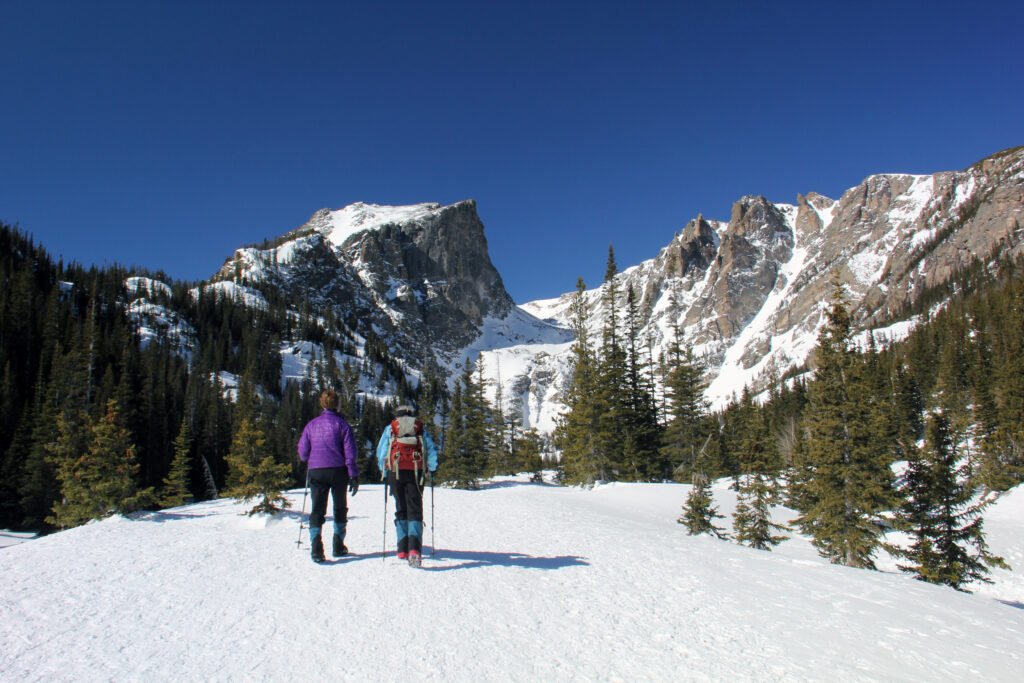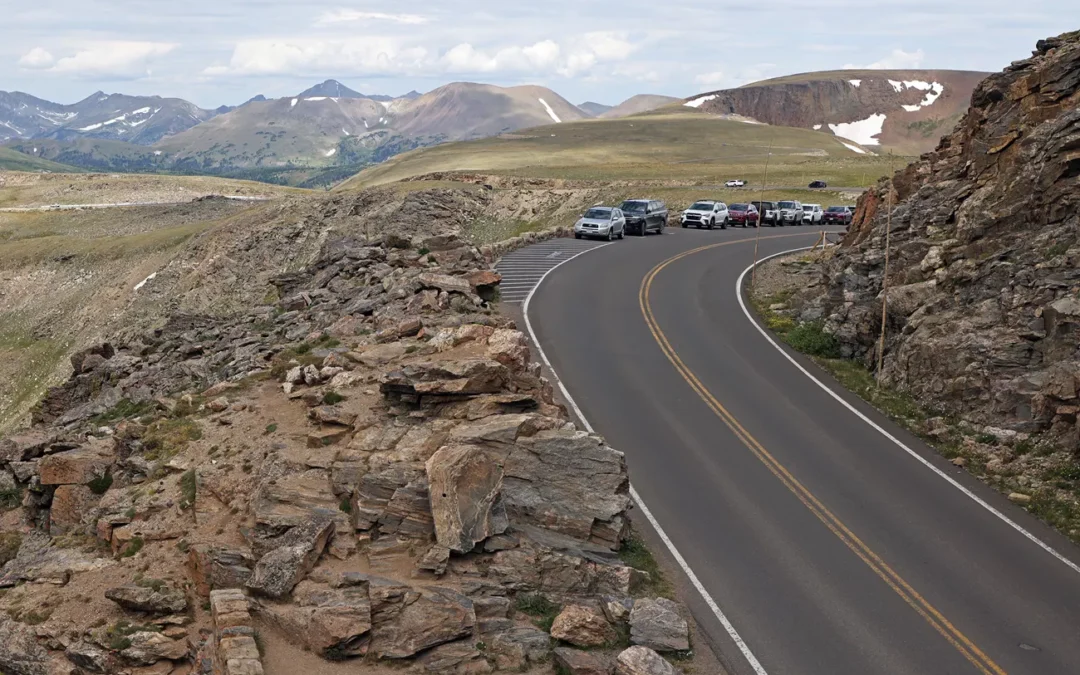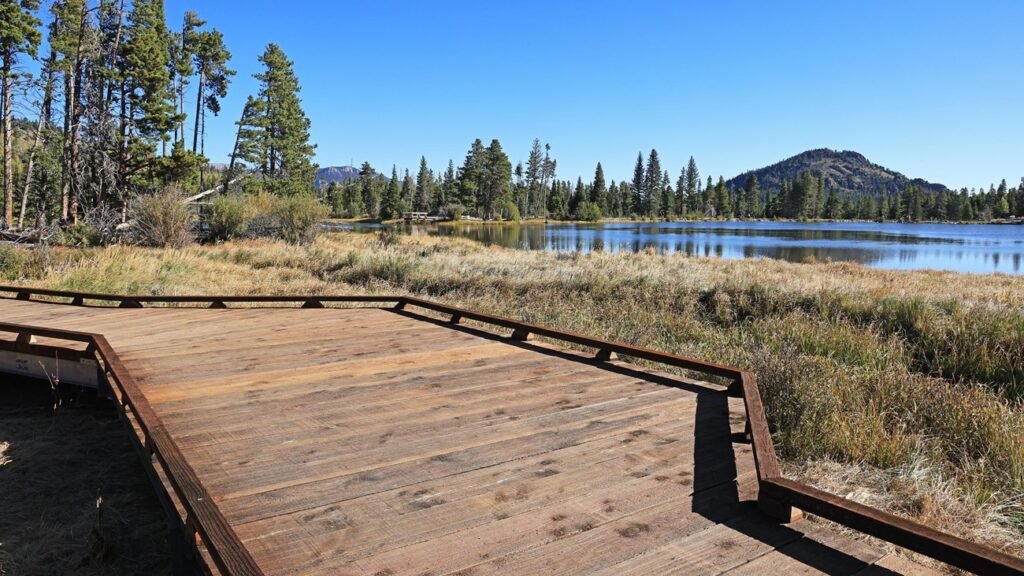By Chuck Price · Last Updated: August 7, 2025
In This Guide:
- TL;DR: Your Perfect Rocky Mountain Plan in 90 Seconds
- The 2025 Two-Tier Entry System Decoded
- The 72-Hour Altitude Ramp-Up Protocol
- The 3 Core Rules for High-Altitude Success
- The Ultimate Rocky Mountain Itineraries
- The Ultimate Reservation Strategy: Two-Tier Mastery
- Pro Tips for Wildlife & Weather Windows
- Altitude Sickness: Recognition & Response
- FAQ: Your Top Rocky Mountain Questions Answered
- Your Adventure Starts Now (Free Downloads)

(2015) Hiking on Dream Lake/Emerald Trailhead
TL;DR: Your Perfect Rocky Mountain Plan in 90 Seconds
Want to conquer Rocky Mountain’s new 2025 reservation maze while avoiding altitude sickness? This guide reveals the 72-hour acclimatization protocol that prevents 90% of high-altitude emergencies. Beginning on May 23, 2025, a timed entry reservation will be required to enter Rocky Mountain National Park during certain hours, but there’s a two-tier system most visitors misunderstand. You’ll get:
- The Bear Lake vs. “Everything Else” reservation decoder
- Day 0 Estes Park sleep-high/hike-low strategy
- Early-morning Trail Ridge Road tactics before altitude hits hard
Pro tip: Rocky Mountain National Park starts at the already-lofty elevation of 7,840 feet and extends up to 14,259 feet on Longs Peak – acclimatization isn’t optional, it’s survival.
The 2025 Two-Tier Entry System Decoded
Which Reservation Type Do You Actually Need?
Rocky Mountain’s confusing system offers two different permits: One reservation option, titled “Timed Entry + Bear Lake Road” provides day use vehicle access to RMNP’s Bear Lake Road Corridor, while the standard “Timed Entry” excludes the park’s most popular area.
Your Two-Tier Decision Tree:
- 🔴 BEAR LAKE ROAD ACCESS (Most Popular):
- “Timed Entry + Bear Lake Road” Required
- When: 5am-6pm for Bear Lake Road corridor
- Includes: Bear Lake, Emerald Lake, Dream Lake, Alberta Falls
- Cost: Higher demand, sells out fastest
- 🟡 EVERYTHING ELSE:
- “Timed Entry” (Standard) Required
- When: 9am and 2pm from the Friday of Memorial Day weekend to Columbus Day
- Includes: Trail Ridge Road, Sprague Lake, Lily Lake, and all other areas
- Excludes: Bear Lake Road corridor
- ✅ NO RESERVATION WINDOWS:
- Early Entry: Before 5 AM (Bear Lake) / Before 9 AM (Rest of park)
- Late Entry: After 6 PM (Bear Lake) / After 2 PM (Rest of park)
- Off-Season: January 1 – May 22, 2025
Here’s the critical insight most guides miss: You can’t upgrade from “Timed Entry” to “Timed Entry + Bear Lake Road” at the gate. If you have a Timed Entry + Bear Lake Road Reservation, you must enter the park via the Beaver Meadows, Fall River, or Grand Lake Entrance, and also enter the Bear Lake Road Corridor within your designated two-hour reservation window. Choose wrong, and you’re locked out of the park’s crown jewels.
The 72-Hour Altitude Ramp-Up Protocol
⚠️ Altitude Reality Check
Altitude sickness affects one in five people visiting Rocky Mountain National Park. At 12,183 feet, Trail Ridge Road reaches oxygen levels 40% lower than sea level. Without proper acclimatization, your dream trip becomes a medical emergency.
The Smart Ascent Strategy:
- Day -1 (Arrival Day): Sleep in Estes Park (7,522 ft) – high enough to start adaptation, low enough to sleep well
- Day 0 (Acclimatization Day): “Hike low, sleep high” – easy valley hikes, return to Estes Park
- Day 1 (Trail Ridge Day): Early morning ascent when oxygen tolerance peaks
Day 0: The Forgotten Acclimatization Day
Most visitors rush straight to high elevation. Smart travelers spend Day 0 at mid-elevation, letting their bodies adapt:
- Morning (8:00 AM): Hike Lily Lake Loop (8,927 ft) – easy 0.8-mile loop perfect for testing your altitude response
- Midday: Explore downtown Estes Park, hydrate aggressively (3+ liters), avoid alcohol
- Afternoon (2:00 PM): Sprague Lake (8,710 ft) for mountain reflections and gentle elevation gain
- Evening: Early dinner, early sleep at 7,500+ feet to maximize REM sleep adaptation
The 3 Non-Negotiable Rules for Rocky Mountain Success
- Respect the Altitude Gradient: Never ascend more than 2,000 feet per day above 8,000 feet without acclimatization. If you’re coming from sea level, spend 48+ hours below 10,000 feet before attempting Trail Ridge Road or any alpine hikes.
- Master the Two-Tier Timing: If you have a Timed Entry + Bear Lake Road Reservation, you must enter the entrance to RMNP and the entrance to the Bear Lake Road Corridor within your designated 2-hour window of time. Missing this window locks you out – no exceptions, no refunds.
- Weather-Smart Flexibility: Alpine weather changes in minutes. Always check current conditions and carry the “10 essentials” – afternoon thunderstorms above treeline are deadly.
The Ultimate Rocky Mountain Itineraries
The 1-Day Alpine Lake Express: Bear Lake Corridor Mastery
Perfect for first-time visitors who want maximum impact. This route requires the “Timed Entry + Bear Lake Road” reservation but delivers Rocky Mountain’s greatest hits.
- Pre-Dawn (5:30 AM): Enter via the Beaver Meadows entrance within your reservation window. Drive directly to the Bear Lake trailhead (9,475 ft) while parking is still available.
- Sunrise Hike (6:30 AM): Begin Emerald Lake Trail – 3.2 miles round trip through Nymph Lake, Dream Lake, and Emerald Lake. Early start means wildlife sightings and solitude before crowds arrive at 8 AM.
- Mid-Morning (9:30 AM): Return to Bear Lake for the easy 0.6-mile Bear Lake Loop – perfect for photos and altitude adjustment.
- Late Morning (11:00 AM): Drive to Alberta Falls trailhead. Hike 1.6 miles round trip to Alberta Falls – a powerful waterfall and gateway to the Loch Vale.
- Afternoon (2:00 PM): Descend to lower elevation. Visit Sprague Lake for mountain reflections and easy walking when altitude fatigue peaks.
Altitude Management: This itinerary keeps you below 10,500 feet – high enough for spectacular views, low enough to avoid severe altitude symptoms for most visitors.
The 2-Day Continental Divide Crossing: Low to High Strategy
Day 1: Follow the “Day 0 Acclimatization” protocol above, sleeping in Estes Park.
Day 2: Now your body is ready for the high country.
The Trail Ridge Road Adventure (Requires Standard “Timed Entry”)
- Early Entry (7:00 AM): Enter before 9 AM permit window via Fall River entrance. Take Trail Ridge Road westbound – 48 miles of the highest continuous paved road in North America.
- First Stop (8:00 AM): Many Parks Curve (9,620 ft) for Estes Valley panorama. Monitor yourself for altitude symptoms.
- Alpine Visitor Center (10:30 AM): 11,796 feet – browse exhibits, use restrooms, and assess your altitude tolerance. If feeling good, continue. If symptoms appear, descend immediately.
- Trail Ridge Road Summit (11:00 AM): 12,183 feet – photo stop at the Continental Divide. Limit time above treeline to 1-2 hours maximum.
- Descent (12:30 PM): Drive west to Grand Lake or return east via same route. Descending relieves altitude stress rapidly.
Afternoon Recovery Options:
- Easy Choice: Lily Lake (8,927 ft) for gentle walking and recovery
- Adventure Choice: Ouzel Falls Trail (8,600 ft start) if energy permits
The 3-Day High Country Immersion: Master’s Program
Days 1 & 2: Follow the “2-Day Continental Divide Crossing” above.
Day 3: Advanced high-altitude adventures for fully acclimatized visitors.
Morning: Challenging Alpine Options
- Expert Choice: Sky Pond Trail (10,900+ ft) – 8.4 miles round trip to glacial cirque and hanging lake. Requires an early start and full acclimatization.
- Moderate Choice: Gem Lake Trail (8,800 ft) – 3.4 miles to unique granite formations with valley views.
Afternoon: Hidden Gems
- Mills Lake via Glacier Gorge – 5.6 miles round trip to pristine alpine lake with dramatic Longs Peak backdrop
- Chasm Lake (for experts only) – 8.4 miles to dramatic cirque beneath Longs Peak’s east face
The Ultimate Reservation Strategy: Two-Tier Mastery
The Bear Lake Lottery Strategy
Bear Lake Road permits are the park’s hottest ticket. Here’s how to secure them:
- 60-Day Release: Most permits release 60 days in advance at 10 AM Mountain Time. Set multiple alarms.
- Day-Before Release: Limited permits release daily at 7 PM for next-day access – perfect for last-minute planning
- Cancellation Hunting: Check Recreation.gov multiple times daily. Cancellations appear randomly.
No-Permit Backup Plans:
- Early Bird Strategy: You just have to arrive before the permitting time begins in the morning or after the permitting time ends in the afternoon. Arrive at 4:30 AM for guaranteed Bear Lake access.
- Evening Window: Enter after 6 PM for sunset photography and evening wildlife viewing
- Alternative Entrances: Focus on Trail Ridge Road, Sprague Lake, and Wild Basin – equally spectacular, fewer crowds
Daily Permit Release Schedule:
- 10:00 AM MT: 60-day advance permits (high competition)
- 7:00 PM MT: Next-day permits (moderate competition)
- All day: Random cancellations (check frequently)
Pro Tips for Wildlife & Weather Windows
Wildlife Photography Timing
Rocky Mountain’s wildlife follows predictable patterns tied to altitude and season:
- Dawn (5:30-7:30 AM): Elk bugling in meadows, moose at Sprague Lake
- Dusk (6:00-8:00 PM): Bighorn sheep at Sheep Lakes, mule deer throughout park
- High Elevation: Mountain goats near Alpine Visitor Center, pikas above treeline
Weather Window Strategy
- Morning Glory: Clearest skies typically 6 AM – 11 AM before afternoon thunderstorms build
- Afternoon Retreat: Thunderstorms peak 1 PM – 4 PM above treeline. Always have an escape plan.
- Seasonal Wisdom: Trail Ridge Road closes with first significant snow (typically October). Check road status before planning high-elevation adventures.
Altitude Sickness: Recognition & Response
🚨 Emergency Symptoms – Descend Immediately:
- Severe headache that doesn’t respond to pain relievers
- Vomiting or persistent nausea
- Confusion or difficulty thinking clearly
- Difficulty breathing at rest
- Loss of coordination or stumbling
The HACE/HAPE Protocol:
- Immediate Descent: Drop 1,000+ feet elevation as quickly as safely possible
- Call for Help: Emergency: 911 | Park Rangers: (970) 586-1204
- Support Breathing: Oxygen if available, constant monitoring
- Medical Evacuation: Severe cases require immediate hospital transport
Prevention is Everything: Mild symptoms (headache, mild nausea, fatigue) are your body’s warning system. Heed them early, and serious altitude sickness is preventable.
FAQ: Your Top Rocky Mountain Questions Answered
Do I really need the Bear Lake Road permit?
Only if you want to visit Bear Lake, Emerald Lake, Dream Lake, or Alberta Falls between 5 AM – 6 PM. One reservation option, titled “Timed Entry + Bear Lake Road” provides day use vehicle access to RMNP’s Bear Lake Road Corridor – it’s mandatory for the park’s most popular area.
Can I get altitude sickness just driving Trail Ridge Road?
Absolutely. Rocky Mountain National Park starts at the already-lofty elevation of 7,840 feet and extends all the way up to 14,259 feet. Trail Ridge Road’s 12,183-foot summit can trigger symptoms in anyone, especially those from sea level.
What’s the best month to visit?
July-August for fully accessible roads and wildflowers. September for elk bugling and fewer crowds. May-June for waterfalls but limited high-elevation access due to snow.
Is Rocky Mountain family-friendly?
Very, with altitude awareness. Easy trails like Bear Lake Loop and Sprague Lake are perfect for children, but monitor kids closely for altitude symptoms – they’re more susceptible than adults.
How much water should I carry?
Minimum 3-4 liters per person per day at high elevation. Colorado’s dry air and altitude dramatically increase dehydration risk. Add electrolytes to prevent cramping.
Ready for the High Country? — Essential Downloads
Don’t let altitude or permits ruin your Rocky Mountain adventure. Download these official resources before you lose cell service at 12,000 feet:
Next step: Check permit availability, book Estes Park accommodation for altitude acclimatization, and prepare for the adventure that connects earth to sky.
Featured image: Trail Ridge Road at sunrise via National Park Service


